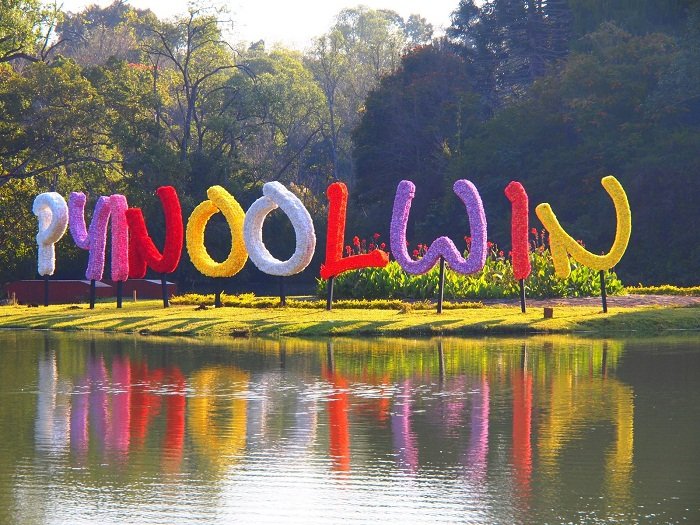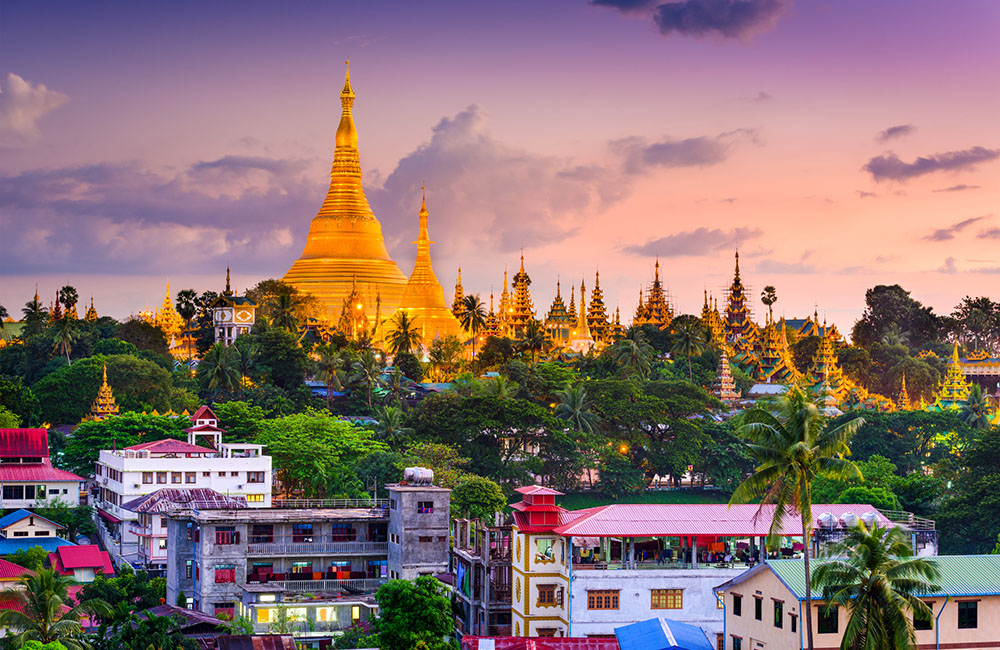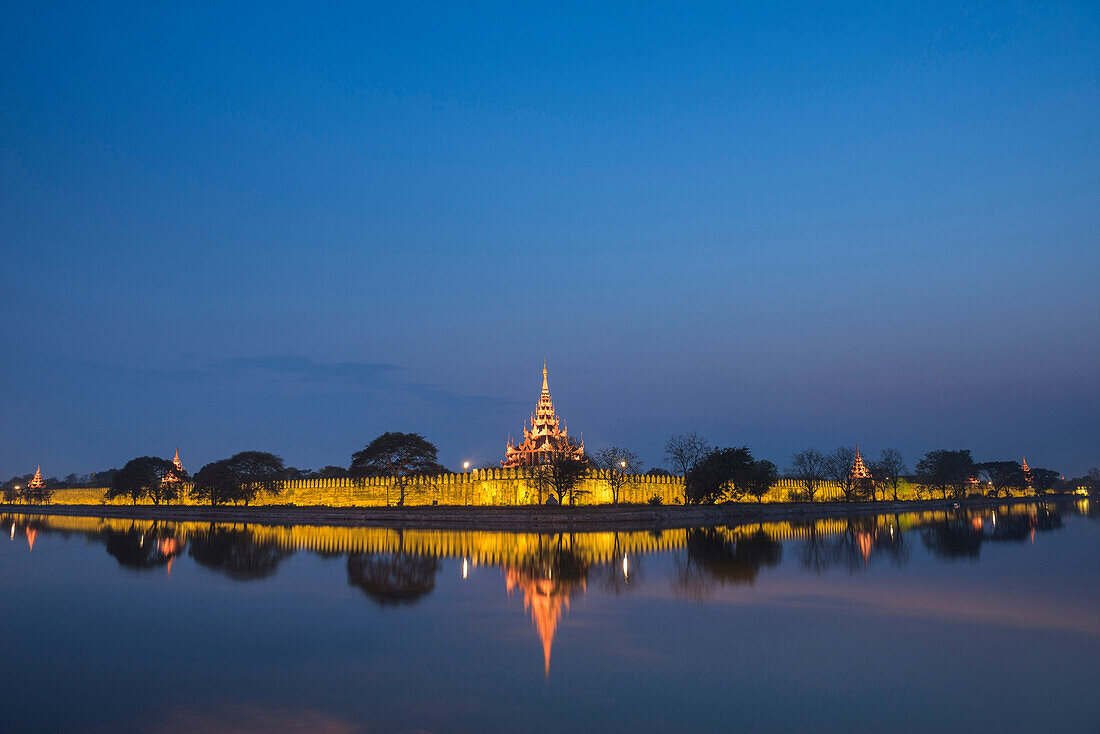Top Cities in Myanmar
Discover the vibrant culture and rich heritage of Myanmar's major cities

Pyin Oo Lwin
Pyin Oo Lwin, once known as Maymyo during the British colonial era, is a charming hill town just east of Mandalay that still reflects its colonial roots. Founded as a summer retreat for the British in the late 19th century, it became famous for its cool climate, pine forests, and colorful flower gardens. The town is dotted with colonial-style houses, horse-drawn carriages, and Christian churches that preserve its old-world charm. Today, Pyin Oo Lwin is celebrated for its sprawling National Kandawgyi Botanical Gardens, coffee plantations, and nearby waterfalls such as Anisakan and Pwe Kauk, making it a refreshing escape from the heat of the plains. With its blend of history, natural beauty, and cultural diversity, Pyin Oo Lwin stands as a serene retreat where the past gracefully meets the present.

Nay Pyi Daw
Nay Pyi Taw, officially declared the capital of Myanmar in 2005, is a city that represents the nation’s modern chapter while standing apart from the historical capitals like Mandalay and Yangon. Purpose-built with a vision of order and progress, it is laid out in wide, organized zones that include residential areas, government districts, and business centers. The city’s vast highways, sometimes wide enough to fit more than a dozen lanes, have become one of its most striking and unique features. At its heart stands the Uppatasanti Pagoda, a graceful replica of Yangon’s Shwedagon Pagoda, symbolizing spiritual continuity in a modern setting. Nay Pyi Taw also houses the grand Parliament Complex and impressive ministerial buildings, highlighting its role as the administrative hub of the country. Beyond politics, the city offers family-friendly attractions such as the Nay Pyi Taw Zoological Gardens, Safari Park, and the National Museum, which showcases Myanmar’s rich cultural heritage. With its spacious parks, hotels, and conference centers, the city has also become a growing venue for international events and summits. Though still young compared to other cities, Nay Pyi Taw reflects Myanmar’s aspirations for the future while offering visitors a glimpse into its evolving identity.

Yangon
Yangon, the former capital and the largest city of Myanmar, stands as a vibrant and dynamic metropolis that reflects the country’s cultural and historical richness. The city is known for its unique blend of colonial-era architecture, modern developments, and traditional influences, which create a striking urban landscape. Its bustling street markets offer an authentic glimpse into local life, with colorful stalls selling fresh produce, handmade crafts, and traditional snacks. Tranquil lakes and green parks provide refreshing escapes from the busy streets, adding to the city’s charm. At the heart of Yangon’s identity is its spiritual heritage, highlighted by the magnificent Shwedagon Pagoda, a golden stupa that rises majestically over the skyline and serves as one of the most sacred Buddhist sites in the world. Beyond its religious landmarks, Yangon presents a rich tapestry of cultures shaped by diverse communities, offering visitors the chance to explore an array of cuisines, from traditional Burmese dishes to international flavors. The city also boasts a lively arts and cultural scene, with galleries, theaters, and music events that showcase Myanmar’s evolving creativity.

Mandalay
Mandalay, the last royal capital of Myanmar founded in 1857 by King Mindon, is a city that carries the essence of history while embracing the pulse of modern life. Once centered around the majestic Mandalay Palace, the city still reflects the grandeur of its royal past, even though much of the palace was lost during World War II. At its heart lies the sacred Mahamuni Pagoda, home to one of the most venerated Buddha images in the country, attracting pilgrims and travelers alike. The city is also famed for its artisans who continue to practice age-old crafts such as gold leaf making, wood carving, and silk weaving, keeping traditions alive through generations. Rising above the landscape, Mandalay Hill offers sweeping views of the Irrawaddy River and golden sunsets that captivate every visitor. Beyond its historic charm, Mandalay bustles with local markets, monasteries, and a vibrant daily rhythm, making it a unique blend of spiritual heritage, cultural treasures, and urban energy.

Bagan
Bagan, the ancient city of over 2,000 surviving temples and pagodas, stands as Myanmar’s most iconic archaeological treasure and a timeless symbol of its spiritual heritage. Flourishing as the capital of the Pagan Kingdom from the 9th to the 13th century, it was once home to more than 10,000 Buddhist structures, built under the devotion of kings and artisans who shaped the golden era of Myanmar’s history. Today, Bagan is recognized as a UNESCO World Heritage Site, where the plains are dotted with countless stupas, monasteries, and mural-filled temples that glow with golden light at sunrise and sunset. Highlights such as the Ananda Temple, Dhammayangyi Temple, and Shwezigon Pagoda showcase architectural brilliance and centuries of devotion. Beyond history, Bagan enchants visitors with its traditional lacquerware crafts, horse-cart rides, and the unforgettable experience of hot-air ballooning over the temple plain. As one walks among its ancient ruins, Bagan feels like an open-air museum where every brick whispers stories of faith, culture, and a glorious past that continues to inspire.

Kyaukse
Kyaukse, a historic town in Myanmar’s Mandalay Region, is often called the “rice bowl” of the country for its fertile lands that have sustained generations. Its history stretches back to the Bagan era, when ancient irrigation systems built under King Anawrahta turned the region into a prosperous agricultural hub. Today, Kyaukse is most famous for its grand Kyaukse Elephant Dance Festival, held annually during Thadingyut, where life-sized papier-mâché elephants come alive in vibrant performances honoring the Buddha. The town is also home to revered pagodas such as Shwe Tha Lyaung Pagoda and Tamote Shinpin Shwegu Gyi Temple, showcasing ties to Myanmar’s religious and cultural heritage. With its blend of historical importance, spiritual landmarks, and colorful traditions, Kyaukse offers visitors a unique glimpse into Myanmar’s deep-rooted culture and rural charm.